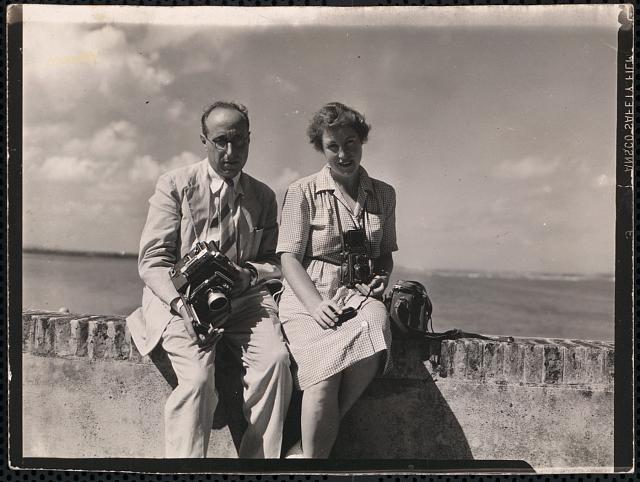‘Re-Viewing Documentary: The Photographic Life of Louise Rosskam’
By • November 23, 2011 0 1652

When we think of depression-era- and- beyond documentary photography, people probably don’t think of Louise Rosskam, except maybe in context of her better known husband Ed with whom she worked.
You might think, instead of Dorothea Lange perhaps, or Walker Evans and his collaboration with James Agee on “Let Us Now Praise Famous Men.”
The Rosskams worked for institutions and corporations like the Farm Security Administration, the Office of War Information, the U.S. Treasury Department, the Standard Oil Company, the Office of Information for Puerto Rico or the New Jersey Department of Education, a client list that might not pique interest or generate excitement.
Yet, “Re-Viewing Documentary: The Photographic Life of Louise Rosskam,” part of a group of eclectic exhibitions currently at American University’s Katzen Arts Center, places Louise Rosskam among her better-known peers and contemporaries, all of whom displayed a photographic eye which mixed technical and professional acumen with empathy, a willingness to see and search for meaning in the image before shooting it.
Rosskam’s subjects in this exhibition of 150 photographs are characteristic of the depression-era imagery that has survived, but also go beyond. She and her husband photographed the lives of migrant workers of the kind which today excite controversy and unkind, resentful hearts. Back in the 1920s and 30s they were part of a landscape which included thousands upon thousands of workers—migrant and otherwise—sweating to barely keep food on the table. They traveled all over the country, to New Jersey and to Vermont and to California photographing the people.
There is also a lengthy, generous sampling of their study of life in Puerto Rico during the Depression and after, a land not much looked at in those times and often misunderstood, a U.S. “possession,” not a state. These were times of political stirring, but they were also hard times of poverty and suffering for the poor.
Documentary photography was the province of books, the journalism of photographic essays or case studies, a role that would soon be taken over by television imagery which cares little for emotional power and lot more for talk and melodrama. But in Rosskam’s photos, you can learn more than lifetime’s intake of travel posters—you get the soul of Puerto Rico with her photographs of sugar refineries, a portrait of the family of demonstrators killed in Ponce, framed by a wall full of bullet holes.
More startling, sad and refreshing are her photographs of a Southwest Washington neighborhood in the early 1940s and 1950s which lost its tone and character with the onset of urban renewal projects. Included in this section are haunting color images of Shulman’s Market, a red-brick corner deli with big, red Coca Cola signs, adults and children hanging by the store door, or sitting on stoops in the apartments in the neighborhood.
The powerful accompanying book by Laura Katzman and Beverly W. Brannan is a richly detailed volume that opens up further details on the remarkable careers and lives of the Rosskams, and of Louise in particular, who cared little about personal credit but a lot about the subjects they both photographed.
If you want to know what Louise Rosskam brought to the photographic, documentary table, nothing explains it better than Louise Rosskam herself: “When I got a camera in my hands, I know that I wanted to take a nicely balanced picture, with a theme….but I wanted to get people to understand what that woman holding that child, without enough to eat, felt; and therefore I waited before I took the picture—till the ultimate of her emotions seemed to show, and then quickly got a picture…I wanted to feel that, and get other people to feel it.”
You can see from her photographs at the Katzen exhibition that she got it right.
(“Re-Viewing Documentary: The Photographic Life of Louise Rosskam” is at the Katzen Arts Center through Dec. 14.)

